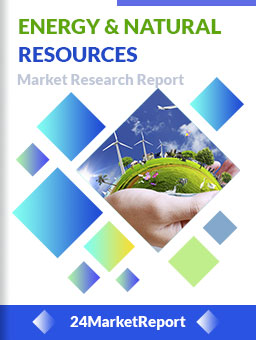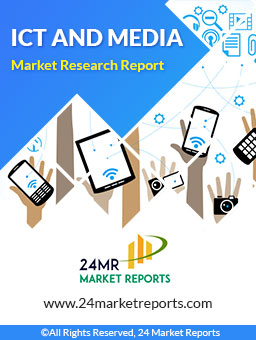
Download FREE Report Sample
Download Free sampleMARKET INSIGHTS
Global mass spectrometry software market size was valued at USD 154 million in 2024 and is projected to reach USD 232 million by 2032, exhibiting a CAGR of 6.2% during the forecast period.
Mass spectrometry software enables critical functions for processing mass spectrometry data, including acquisition, analysis, visualization, and interpretation of complex molecular data. These solutions facilitate qualitative and quantitative analysis by processing mass-to-charge ratios of ions, supporting applications across pharmaceuticals, biotechnology, environmental testing, and food safety. The software ecosystem encompasses cloud-based and on-premise solutions, with specialized capabilities for proteomics, metabolomics, and lipidomics research.
The market growth is driven by increasing pharmaceutical R&D expenditures, which surpassed USD 240 billion globally in 2023, alongside expanding applications in clinical diagnostics. However, data complexity and integration challenges with laboratory information management systems (LIMS) present adoption barriers. The industry is responding with AI-powered analytics - Thermo Fisher Scientific's recent 2024 software update introduced machine learning algorithms for faster peptide identification, demonstrating how vendors are addressing these challenges while capturing new growth opportunities.
Growing Pharmaceutical R&D Investments Accelerate Mass Spectrometry Software Adoption
The pharmaceutical industry's increasing R&D expenditure, projected to exceed $250 billion globally by 2025, is significantly driving demand for mass spectrometry software solutions. These tools have become indispensable in drug discovery and development processes, enabling researchers to analyze complex molecular structures with precision. As pharmaceutical companies expand their pipelines with biologics and complex generics, the need for advanced data processing capabilities offered by mass spec software has grown exponentially. The integration of artificial intelligence components in modern platforms has further enhanced their appeal, reducing analysis time by up to 40% while improving accuracy.
Regulatory Compliance Requirements Fuel Market Expansion
To know more about market statistics, Download a FREE Sample copy
Stringent regulatory standards in pharmaceutical manufacturing and food safety testing have created substantial demand for compliant mass spectrometry solutions. Recent updates to Good Manufacturing Practice (GMP) regulations now mandate more rigorous quality control measures where mass spec software plays a critical role. The market has responded with specialized compliance-focused modules that automatically generate audit-ready reports and maintain comprehensive electronic records, addressing up to 85% of common regulatory documentation requirements. This alignment with compliance needs has made the software essential for analytical laboratories across regulated industries.
➤ Leading vendors have incorporated 21 CFR Part 11 compliance features as standard in their platforms, significantly reducing validation time for regulated users.
Technological Convergence Creates New Applications
The convergence of mass spectrometry with complementary technologies like chromatography and spectroscopy has expanded the software's applications across new industry verticals. Environmental testing laboratories now utilize these integrated solutions to detect contaminants at parts-per-trillion levels, while forensic labs apply them for advanced toxicology screening. The market has seen particularly strong growth in clinical applications, where combined LC-MS systems paired with specialized software are transforming molecular diagnostics with faster turnaround times and improved detection limits.
High Implementation Costs Limit SME Adoption
While mass spectrometry software delivers substantial analytical benefits, the total cost of ownership remains prohibitive for many small and mid-sized laboratories. Comprehensive solutions often require six-figure investments when accounting for hardware integration, IT infrastructure upgrades, and personnel training. This financial barrier has constrained market penetration beyond well-funded pharmaceutical companies and academic institutions, with adoption rates among SMEs remaining below 30% despite growing needs for analytical capabilities. The cost challenge is compounded by ongoing subscription fees for cloud-based solutions and mandatory update cycles that require additional validation expenses in regulated environments.
Data Management Complexity Creates Operational Challenges
Modern mass spectrometry generates enormous datasets that can overwhelm conventional computing infrastructure, with a single instrument run frequently producing over 1GB of raw data. Many organizations struggle with the IT requirements for storing, processing, and archiving these files effectively. Data governance issues have emerged as particularly problematic, as laboratories must balance accessibility requirements with strict security protocols. This complexity has slowed adoption in some sectors, with nearly 40% of potential users citing data handling challenges as their primary hesitation in upgrading to more advanced software platforms.
AI-Powered Analytics Open New Frontiers
The integration of machine learning algorithms into mass spectrometry software presents significant growth opportunities, particularly in untapped application areas. Advanced pattern recognition capabilities now enable automated compound identification with accuracy rates exceeding 90%, reducing reliance on reference libraries. This technological leap is creating opportunities in emerging fields like metabolomics and proteomics, where manual analysis of complex spectra previously limited progress. Vendors investing in AI-enhanced solutions are seeing accelerated adoption, with the AI components market segment growing at nearly double the overall industry rate.
Cloud-Based Solutions Expand Market Accessibility
The shift toward cloud-based mass spec software platforms is dramatically lowering barriers to entry while creating recurring revenue streams for vendors. These solutions eliminate upfront capital expenditures for hardware while providing scalable computing power that adjusts to project demands. Adoption has been particularly strong in academic and government research settings, where cloud deployments have increased by over 60% in the past two years. The model also facilitates easier collaboration across geographically dispersed teams, a feature driving preference among CROs and multinational pharmaceutical companies managing global research initiatives.
Interoperability Issues Hamper System Integration
Despite industry progress, persistent interoperability challenges between software platforms and instrument vendor ecosystems continue to create implementation hurdles. Proprietary data formats and closed architectures still characterize many solutions, forcing laboratories to maintain multiple software packages for different instruments. This fragmentation not only increases costs but also complicates data consolidation efforts - a pain point reported by approximately 65% of multi-vendor laboratory operators. While industry consortia have made progress toward standardization, achieving true plug-and-play compatibility remains an ongoing challenge.
Workforce Skill Gaps Constrain Utilization
The sophistication of modern mass spectrometry software has outpaced the availability of trained operators in many markets. Advanced features often go underutilized because approximately 40% of users only employ basic functionality, according to recent training assessments. This skills gap is particularly acute in emerging markets where access to specialized education programs remains limited. Vendors have responded by expanding certification programs and online training options, but keeping pace with the rapid software evolution continues to challenge both users and providers in maximizing the technology's potential.
On-Premise Solutions Dominate Due to Enhanced Data Security and Customization Capabilities
The market is segmented based on type into:
Cloud-Based
On-Premise
Pharmaceutical Companies Lead with Growing Demand for Drug Development and Quality Control
The market is segmented based on application into:
Pharmaceutical Companies
Research Organizations and Institutions
Others
Enterprise-Wide Implementations Gain Traction for Large-Scale Analytical Operations
The market is segmented based on deployment model into:
Standalone Systems
Enterprise-Wide Deployments
Data Analysis Modules Witness High Demand as Mass Spectrometry Workflows Become More Complex
The market is segmented based on functionality into:
Data Acquisition
Data Analysis
Data Visualization
Market Leaders Leverage AI and Cloud Integration to Gain Competitive Edge
The global mass spectrometry software market exhibits a semi-consolidated structure, with the top five players controlling approximately 60% of total revenue in 2024. Market dominance stems from continuous technological advancements in data processing capabilities, particularly in proteomics and metabolomics analysis. While established vendors maintain leadership through comprehensive solutions, emerging players are carving niches through specialized applications and flexible deployment models.
Thermo Fisher Scientific leads the sector with a 22% market share, owing to its integrated hardware-software ecosystem and strong penetration in pharmaceutical laboratories. The company's Compound Discoverer platform has become an industry standard for -omics research, particularly after their 2023 acquisition of proteomics software developer Protein Metrics.
Waters Corporation and Bruker follow closely, each holding 12-15% market share, with competitive advantages in clinical mass spectrometry and imaging mass spec applications respectively. Bruker's recent partnership with machine learning startup DeepSpectra has significantly enhanced their data interpretation capabilities for complex biological samples.
The competitive dynamics are evolving rapidly with three key trends:
Meanwhile, smaller players like ACD/Labs and Genedata compete through open architecture designs that facilitate third-party integrations, appealing to academic and government research institutions requiring customizable workflows.
The integration of artificial intelligence (AI) and cloud computing into mass spectrometry software is revolutionizing data analysis capabilities. Advanced machine learning algorithms now enable faster processing of complex spectral data, improving accuracy in compound identification by over 30% compared to traditional methods. Furthermore, cloud-based platforms are gaining traction, with deployment rates increasing by approximately 15% annually, as they offer real-time data access and collaborative workflows across multiple locations. This shift is particularly beneficial for pharmaceutical companies conducting multi-site clinical trials, where secure data sharing is critical. The market is also witnessing the emergence of hybrid solutions that combine local processing with cloud storage, offering both speed and scalability.
Pharmaceutical Innovation Driving Demand
The pharmaceutical industry's growing emphasis on drug discovery and proteomics research is significantly boosting demand for sophisticated mass spectrometry software solutions. With over 65% of new drug candidates requiring mass spectrometry analysis during development phases, software platforms are evolving to handle larger datasets and more complex analytical workflows. Recent advancements include automated peak identification and quantification features that reduce analysis time by up to 40%, enabling faster decision-making in critical research stages. Additionally, the increasing adoption of multi-omics approaches in personalized medicine is creating new opportunities for software that can integrate mass spectrometry data with other molecular profiling techniques.
As mass spectrometry applications expand in regulated industries, software vendors are prioritizing compliance features that meet stringent quality standards. The market has seen a 25% increase in demand for software with built-in compliance tools for FDA 21 CFR Part 11 and EU Annex 11 regulations. However, challenges persist in data standardization across different instrument platforms, with approximately 30% of research time still spent on data conversion and normalization. Leading vendors are addressing this through universal data formats and improved interoperability features, though significant variation remains between proprietary systems. The development of open-source data standards and increased industry collaboration are expected to alleviate these challenges in the coming years while maintaining data integrity requirements.
North America
North America dominates the mass spectrometry software market, accounting for approximately 35% of global revenue. The region's leadership stems from robust pharmaceutical R&D investments, stringent regulatory frameworks (such as FDA guidelines), and widespread adoption of advanced analytical technologies. The U.S. remains the primary contributor, driven by its concentration of major pharmaceutical companies, academic research institutions, and key market players like Thermo Fisher Scientific and Waters Corporation. While cloud-based solutions are gaining traction, on-premise software still dominates due to data security concerns in sensitive applications like drug development. Recent focus on precision medicine and proteomics research further accelerates demand for sophisticated data analysis tools.
Europe
Europe represents the second-largest market, characterized by strong academic-industry collaborations and harmonized regulatory standards under EMA oversight. Countries like Germany, the UK, and France lead in adoption, supported by substantial government funding for life sciences research. The region shows increasing preference for integrated software platforms that combine mass spectrometry with other analytical techniques. However, data privacy regulations like GDPR influence software deployment strategies, creating demand for compliant solutions. Notable developments include Bruker's recent advancements in tandem mass spectrometry data processing algorithms tailored for European research consortia.
Asia-Pacific
The Asia-Pacific market is experiencing the fastest growth, driven by expanding pharmaceutical sectors in India and China, and government initiatives boosting scientific infrastructure. While cost sensitivity favors basic software versions, there's growing demand for advanced features in major hubs like Singapore and Japan. Local manufacturers are partnering with global players to offer localized solutions, addressing language barriers and regional analysis requirements. The region's diverse regulatory landscape presents both challenges and opportunities for software providers. Academic institutions are becoming key adoption drivers, particularly in proteomics and metabolomics research fields.
South America
South America's market remains nascent but shows potential, with Brazil and Argentina leading adoption in pharmaceutical quality control and food safety testing. Economic constraints limit widespread use of premium software, creating opportunities for mid-range solutions and open-source alternatives. Regulatory modernization efforts, particularly in Brazil's ANVISA, are gradually raising quality standards and driving software upgrades. The market suffers from fragmentation, with many laboratories still relying on basic data analysis tools rather than comprehensive platforms. However, increasing focus on forensic and environmental applications indicates future growth avenues.
Middle East & Africa
This region presents a developing market with uneven adoption patterns. Gulf Cooperation Council countries, particularly Saudi Arabia and UAE, show promising growth due to healthcare infrastructure investments and growing pharmaceutical manufacturing. South Africa leads in academic research applications, while North African nations are gradually adopting MS technologies for environmental monitoring. Market expansion is constrained by limited technical expertise and budget allocations, though partnerships with international vendors are helping bridge gaps. The region's unique needs in petroleum analysis and homeland security applications are driving specialized software developments.
This market research report offers a holistic overview of global and regional markets for the forecast period 2025–2032. It presents accurate and actionable insights based on a blend of primary and secondary research.
✅ Market Overview
Global and regional market size (historical & forecast)
Growth trends and value/volume projections
✅ Segmentation Analysis
By product type or category
By application or usage area
By end-user industry
By distribution channel (if applicable)
✅ Regional Insights
North America, Europe, Asia-Pacific, Latin America, Middle East & Africa
Country-level data for key markets
✅ Competitive Landscape
Company profiles and market share analysis
Key strategies: M&A, partnerships, expansions
Product portfolio and pricing strategies
✅ Technology & Innovation
Emerging technologies and R&D trends
Automation, digitalization, sustainability initiatives
Impact of AI, IoT, or other disruptors (where applicable)
✅ Market Dynamics
Key drivers supporting market growth
Restraints and potential risk factors
Supply chain trends and challenges
✅ Opportunities & Recommendations
High-growth segments
Investment hotspots
Strategic suggestions for stakeholders
✅ Stakeholder Insights
Target audience includes manufacturers, suppliers, distributors, investors, regulators, and policymakers
-> Key players include Thermo Fisher Scientific, Agilent Technologies, Bruker, Waters, Shimadzu, Sciex, ACD/Labs, and Genedata, with top five manufacturers holding 60% market share.
-> Key growth drivers include increasing pharmaceutical R&D investments, technological advancements in mass spectrometry, and growing demand for precision medicine.
-> North America holds the largest market share (35%), followed by Europe and Asia-Pacific (combined 60% share). The Asia-Pacific region is expected to show highest growth during forecast period.
-> Emerging trends include cloud-based software solutions, AI-powered data analysis, integration with laboratory information management systems (LIMS), and increasing adoption in clinical diagnostics.

Speak to our Custom Research Team and get the Custom Research in a budget
Custom ResearchFrequently Asked Questions ?
A license granted to one user. Rules or conditions might be applied for e.g. the use of electric files (PDFs) or printings, depending on product.
A license granted to multiple users.
A license granted to a single business site/establishment.
A license granted to all employees within organisation access to the product.
Upto Working 24 to 48 hrs
Upto 72 hrs max - Weekends and Public Holidays
Online Payments with PayPal and CCavenue
Wire Transfer/Bank Transfer
Hard Copy




 Industry Market Size
Industry Market Size SWOT Analysis
SWOT Analysis Industry Major Players
Industry Major Players Revenue Forecasts
Revenue Forecasts Historical and Forecast Growth
Historical and Forecast Growth Profitability Analysis
Profitability Analysis
























